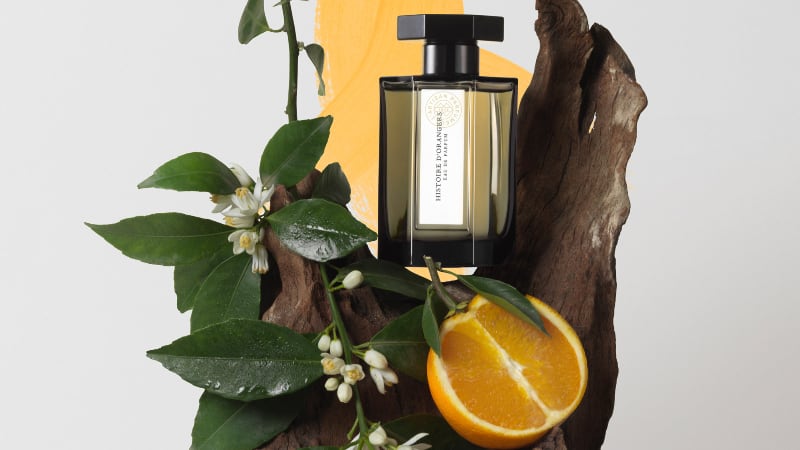SEA’s indie beauty opportunity
South East Asia is a young region with a host of discerning consumers moving away from mass-produced brands in favour of more niche offerings. The region is home to a rich and diverse tapestry of consumers who are seeking out products perfectly aligned with their needs and values.
Local brands are perfectly placed to respond to the shifts on the ground and have a huge opportunity to shape the evolution of the SEA beauty market.
“The market is changing. Just in Thailand and Indonesia, we’re seeing many brands pop up that we’ve never seen before. They are coming up fast with new ideas, products, or marketing activities. These brands are quickly growing their presence in our region,” said Cedric Toh, regional marketing manager, SEA, Australia, and New Zealand, Dow Personal Care.
While opportunities are plentiful, the indie beauty scene is growing more cutthroat. A wave of pandemic-born businesses has come and gone, unable to keep up in the competitive and saturated market.
Navigating these challenges demands a strategic mindset, a commitment to continuous improvement, and the ability to adapt swiftly to changing circumstances. These are the brands that Dow is now keen to work with.
“There have been so many of them competing. Some have survived, and some have not. Those that survive in the longer term are those that have something unique and are willing to be innovative. We want to make sure we are there with those players as well,” said Toh.
One of the challenges for the company has been reaching out to indie brand owners in the region.
“We’re not just looking for major brand owners anymore. Today, a brand owner could be anyone, and it’s a struggle to look for them. We had to change our approach entirely. We decided that the best way to reach out to them was through digital media and key opinion leaders and influencers,” Toh said.
For the first time, Dow reached out to a group of influencers in Thailand and invited them to their offices. The company also hosted an ODM/OEM workshop for independent brand owners to showcase its technology and know-how.
The overall goal was to help them get to know Dow, expand their technical cosmetic knowledge, and also share the process of how cosmetics get made.
“Mostly, consumers know who the brands are, not the suppliers. We hope that the followers of these influencers, who could be indie brand owners as well, can see how we are supporting the industry and supporting indie brands as well,” said Toh.
The event was also a chance to dispel certain myths and misconceptions about cosmetics.
“People like to talk about silicone-free formulations, and to them, a whole class of silicones is considered ‘bad’. As a major silicone supplier, we have the opportunity to explain that this is not the case. Silicone can do wonders without causing a lot of problems. We hope that KOLs can share information like this with their followers,” said Toh.
The company hopes it can continue to engage more influencers across the SEA region and potentially build relationships with the region’s indie brand owners.
This way, the company can also better understand their unique needs and challenges, and provide more flexible options, like breaking down minimum order quantities (MOQ) through their distribution partners for indie brands.
Kick-off 2024 by discovering the trends shaping the next generation of beauty consumers. Join us at the Beauty Forward 2024 digital summit taking place January 29 to 31. Register here for FREE now.
Skin According to Z
In the ever-evolving landscape of beauty, Generation Z is pushing boundaries and redefining beauty standards. The cosmetic industry pays close attention to this cohort as they shape emerging trends.
“From a consumer demographic perspective, definitely the emerging spaces are driven a lot by Gen Z. These consumers are getting more educated on skin care from a younger age,” said Micaela Perlada, APAC regional marketing manager, Givaudan.
The ingredients firm is closely monitoring the behaviour of Gen Z beauty consumers and their evolving attitudes towards skin care.
When it comes to skin care, Perlada explained that Gen Z is particularly drawn to products that seamlessly combine efficacy with staying attuned to current trends.
“What they are looking for are ingredients that deliver performance. At the same time, they are very trend-driven and take inspiration coming from the fashion world, for instance.”
She elaborated that the resurgence of ingredients like retinol and hyaluronic acid can be credited to Gen Z’s interest in skin care.
“We’re seeing a lot of nostalgia-inspired trends, for instance, Y2K. What was cool in the 2000s is making a comeback. In skin care, this moves us back to the epoch of the hero with the classic concepts of hero ingredients like retinol or hyaluronic acid.”
However, cosmetic companies cannot simply recycle old ideas. Their challenge is to find a way to put a new spin on these tried-and-tested ingredients.
“We have come to a point where consumers are expecting new benefits. They want upgrades of the heavyweights, meaning they want newer versions of the good old favourites,” Perlada said.
She highlighted a wet skin moisturiser the company recently developed.
“We have a hyaluronic acid suitable for rinse-off conditions. It’s a cationic hyaluronic acid, and the idea is that it will stick to the skin and continue to deliver the benefits of HA. We designed it to be the last step in your shower routine. With a consumer home usage test, people still felt the benefits of hyaluronic acid at a much lower dosage – three times lower. Here we’ve kept the benefits and elevated the shower experience.”
Another major influence is the normalisation of medical aesthetic treatments among Gen Z, which is set to have a huge impact on skin care.
“The focus is going to move towards taking control. We’re hearing more about biohacking because it's no longer about how long you live but living well. The idea of health is still very much relevant in their minds, so innovations around health will be key,” said Perlada.
Against this backdrop, Givaudan has placed an even greater emphasis on biotechnology to meet the needs of tomorrow’s consumers.
Perlada highlighted the launch of RetiLife this year, a 100% naturally sourced retinol and sustainable solution to chemically synthesised retinol. According to the firm, its molecule is identical to its chemical counterpart.
“The idea is to bring something to market that is well-known, well-understood, but more sustainable and more workable for scientists.”
Sun Care Goes Blue
Carbonwave is a US-based ingredients firm that specialises in seaweed-based biomaterials. The firm is best-known in the cosmetic industry for its seaweed-based emulsifier, SeaBalance, which is upcycled from free-floating Sargassum waste from the Caribbean.
The company has recently inked a deal to expand its distributorship in Australia and New Zealand, which it believes is a natural evolution for the company.
“Our story is all about protecting the oceans, and we have a big environmental focus with SeaBalance. We’re made for Australia and New Zealand – just like peanut butter and jelly. They have a big focus on natural ingredients, and there’s an affinity with the beach, the sea, and the natural environment,” said Alie White, associate director of business development, APAC, Carbonwave.
In particular, the firm is excited about opportunities in sun care, where there is rising demand for natural, ocean-friendly alternatives. The category is being heavily influenced by consumer demand for what they perceive to be safer and more eco-friendly ingredients.
“Every customer we speak to is excited about first and foremost the sunscreen potential, then serums and moisturisers. These are probably the top three products people are looking to work on here,” said White.
“Companies are looking to develop more natural products. This would be a perfect story for a natural sunscreen; imagine using a product on the beach with ingredients that come from the ocean. People want to protect their skin, but they want to do it in a way that doesn't hurt the environment.”
The company boasts that SeaBalance caters to the consumers’ increasing high sensorial expectations for sunscreen.
“What people are looking for is the ability to make wearable sunscreen. That means that the white cast effect is a non-starter. Factors like greasiness and heaviness are also big challenges. We have seen reductions in all these across the board with SeaBalance,” said White.
Additionally, the company is keen to explore potential in the hair care space.
“It’s become clear that hair care is a really hot space. We get the sense speaking to people it could be huge as well,” said White.
In addition to expanding its distribution to the Oceania region, the company is in the midst of obtaining approval for SeaBalance in China.
“Our expansion to Australia and New Zealand and getting China compliance will open so many doors for us. We have people who are really excited about this concept so 2024 is definitely going to be a big year for us as we remove the hurdles for them,” said White.
Moving forward, the company could explore markets such as India, where it believes it can capitalise on the boom in sunscreen as sun care awareness continues to grow.





